

Population studies play a crucial role in any planning activity. They are even more crucial in the preparation of development framework that will span over a period of time. It is in the light of this, that the demographic characteristics of the Dormaa Municipality have been analysed and its development implications identified.
Population Size and Growth Rate
The population of the Dormaa Central Municipality as at 1960, 1970 and 1984 was 51,057, 76,650 and 107,996 respectively. The 2002 population census put Central Municipality population at 150,229. The growth rate of the district population between 1960 and 1970 was 4.0 percent but this decreased to 2.4 percent between 1970 and 1984. Between 1984 and 2000, the growth rate between the censual period was 2.1 for the Municipalityand 2.5 and 2.7 for the region and nation respectively.
The decline in the growth rate between 1970 and 1984 is due mainly to the decline in the cocoa industry in the district. People from other parts of the country who migrated to then Dormaa Central Municipality to partake in the booming cocoa industry, this time round migrated out to other parts of the country especially the Sefwi area where the industry was booming. Others also migrated to la Cote d’Ivoire where the industry has just picked up. The massive bush fire that swept through the cocoa growing areas in the district in 1983 resulted in the out-migration of farmers to other Municipality to engage in gainful economic activities.
This mainly accounted for the decline in the growth rate between 1970 and 1984. Dormaa Central Municipality population, which has been increasing at a decreasing rate also manifested itself in the 2000 census.
Settlement Distribution
The 1970 population census defined an urban settlement as one with population 1500 people and above. Using this definition as a yardstick to determine whether a settlement is urban or rural, then it is obvious that there are only four settlements within the Municipality, which can be classified as urban settlement. These settlements are Dormaa Ahenkro, Wamfie, Wamanafo and Nkrankwanta
Settlement Pattern
The forms of settlements which are predominantly in the Municipality are nucleated and linear. Some of the nucleated settlements are Dormaa Ahenkro, Wamfie, Nkrankwanta, Wamanafo and Kyeremasu. The linear settlements include Atesikrom, Nsuhia, Asikasu, Kwakuanya and Santaso.
In all, there are 345 settlements in the Municipality and these are concentrated mostly in the northern and southern part of the Municipality with the central portion poorly populated. The northern portion of the Municipality has the highest concentration of large settlements.
The central part is sparsely populated and this is due to the fact that it constitutes a substantial part of the Mpameso Forest Reserve. The southern part of the Municipality has the highest concentration of smaller settlement . The urban population constitutes 31.3 percent of the Municipality total population. This implies that the Municipal is predominantly rural in character, with agriculture as the predominant occupation.
Household Characteristics
Household according to the 2000 census is a person or group of persons who live together in the same house or compound and share the same housekeeping arrangements and are catered for as one unit. With this definition in mind, the study indicated that the average household size for the district is 4.7 which is higher than the national average of 5.1 and regional average of 5.1 and regional average of 4.7. Households in the rural areas are larger than those in the urban centres of the Municipality. The average urban household size is 4.6 persons per household as compared to 6.4 for the rural areas of the Municipality.
Religious Composition of Population
The baseline study showed that Christians constitute the largest percentage of the district’s population, accounting for 72 percent of the sampled population. Islam constitutes about 19 percent of the Municipal population, whilst traditional religion forms only 3 percent. Despite the religious diversity, there is religious tolerance at the Municipality and this development auger well for peace and stability within the Municipality, which are essential ingredients to development.
Age-Sex Composition
Dormaa Municipality population is generally youthful with those in age group of 15 - 64 constituting 57 percent of the sampled population. Age group 0 – 14 forms 36 percent of those sampled for the study, whilst those above 64 years constitutes 7 percent of the population. The male-female ratio is 1:1.07. This implies that for every 9 males in the Dormaa Central Municipality, there are 10 females to contend with.
This phenomena is not different from what is happening at the national level where females out-number males. The implication here is that any measure to reduce poverty should be targeted towards females and they should also not be left out in decisions affecting the socio-economic development of the Municipality.
Major Findings of the Municipal Demographic Characteristics
1. The district’s population is highly concentrated in the northern part of the Municipality. Also, all the major settlements are located in the north. Development, therefore is skewed towards the north to the detriment of the south.
2. The Municipality population growth rate is reducing due to the decline in the cocoa industry and the resultant migration of farmers and also improved family planning practices.
3. It is also worthy to note that the active labour force of the district is migrating out of the Municipalityin search of greener pastures and the in-active labour force are left behind. This is affecting the dependency ratio and the Municipality production levels.
4. The Municipality large labour force is a potential for would be investors.
5. The Municipality has large average household size, which is a threat and could have adverse effect on the per capita income of the Municipality.
Population studies play a crucial role in any planning activity. They are even more crucial in the preparation of development framework that will span over a period of time. It is in the light of this, that the demographic characteristics of the Dormaa Municipality have been analysed and its development implications identified.
Population Size and Growth Rate
The population of the Dormaa Municipality as at 1960, 1970 and 1984 was 51,057, 76,650 and 107,996 respectively. The 2002 population census put Dormaa Municipality population at 150,229. The growth rate of the district population between 1960 and 1970 was 4.0 percent but this decreased to 2.4 percent between 1970 and 1984. Between 1984 and 2000, the growth rate between the censual period was 2.1 for the Municipalityand 2.5 and 2.7 for the region and nation respectively.
The decline in the growth rate between 1970 and 1984 is due mainly to the decline in the cocoa industry in the district. People from other parts of the country who migrated to then Dormaa Municipality to partake in the booming cocoa industry, this time round migrated out to other parts of the country especially the Sefwi area where the industry was booming. Others also migrated to la Cote d’Ivoire where the industry has just picked up. The massive bush fire that swept through the cocoa growing areas in the district in 1983 resulted in the out-migration of farmers to other Municipality to engage in gainful economic activities.
This mainly accounted for the decline in the growth rate between 1970 and 1984. Dormaa Municipality population, which has been increasing at a decreasing rate also manifested itself in the 2000 census.
Settlement Distribution
The 1970 population census defined an urban settlement as one with population 1500 people and above. Using this definition as a yardstick to determine whether a settlement is urban or rural, then it is obvious that there are only four settlements within the Municipality, which can be classified as urban settlement. These settlements are Dormaa Ahenkro, Wamfie, Wamanafo and Nkrankwanta
Settlement Pattern
The forms of settlements which are predominantly in the Municipality are nucleated and linear. Some of the nucleated settlements are Dormaa Ahenkro, Wamfie, Nkrankwanta, Wamanafo and Kyeremasu. The linear settlements include Atesikrom, Nsuhia, Asikasu, Kwakuanya and Santaso.
In all, there are 345 settlements in the Municipality and these are concentrated mostly in the northern and southern part of the Municipality with the central portion poorly populated. The northern portion of the Municipality has the highest concentration of large settlements.
The central part is sparsely populated and this is due to the fact that it constitutes a substantial part of the Mpameso Forest Reserve. The southern part of the Municipality has the highest concentration of smaller settlement . The urban population constitutes 31.3 percent of the Municipality total population. This implies that the Municipal is predominantly rural in character, with agriculture as the predominant occupation.
Household Characteristics
Household according to the 2000 census is a person or group of persons who live together in the same house or compound and share the same housekeeping arrangements and are catered for as one unit. With this definition in mind, the study indicated that the average household size for the district is 4.7 which is higher than the national average of 5.1 and regional average of 5.1 and regional average of 4.7. Households in the rural areas are larger than those in the urban centres of the Municipality. The average urban household size is 4.6 persons per household as compared to 6.4 for the rural areas of the Municipality.
Religious Composition of Population
The baseline study showed that Christians constitute the largest percentage of the district’s population, accounting for 72 percent of the sampled population. Islam constitutes about 19 percent of the Municipal population, whilst traditional religion forms only 3 percent. Despite the religious diversity, there is religious tolerance at the Municipality and this development auger well for peace and stability within the Municipality, which are essential ingredients to development.
Age-Sex Composition
Dormaa Municipality population is generally youthful with those in age group of 15 - 64 constituting 57 percent of the sampled population. Age group 0 – 14 forms 36 percent of those sampled for the study, whilst those above 64 years constitutes 7 percent of the population. The male-female ratio is 1:1.07. This implies that for every 9 males in the Dormaa Municipality, there are 10 females to contend with.
This phenomena is not different from what is happening at the national level where females out-number males. The implication here is that any measure to reduce poverty should be targeted towards females and they should also not be left out in decisions affecting the socio-economic development of the Municipality.
Major Findings of the Municipal Demographic Characteristics
1. The district’s population is highly concentrated in the northern part of the Municipality. Also, all the major settlements are located in the north. Development, therefore is skewed towards the north to the detriment of the south.
2. The Municipality population growth rate is reducing due to the decline in the cocoa industry and the resultant migration of farmers and also improved family planning practices.
3. It is also worthy to note that the active labour force of the district is migrating out of the Municipalityin search of greener pastures and the in-active labour force are left behind. This is affecting the dependency ratio and the Municipality production levels.
4. The Municipality large labour force is a potential for would be investors.
5. The Municipality has large average household size, which is a threat and could have adverse effect on the per capita income of the Municipality.
ENVIRONMENTAL SITUATIONS
Dormaa Municipality abounds in a number of natural resources, which serve as a good potential for development. Some of these are being exploited whilst others remain unexploited. These resources include gold deposits, clay deposits, forests and water bodies. The gold deposits are found in the Pamu-Berekum Forest Reserve, Kofiasua, Dormaa Akwamu, Aboabo, Nsuhia and Koraso. Currently, some mining companies have been permitted to prospect for the mineral in some of these communities. The clay deposits in the district are mainly found in Pampaso, Asuotiano, Aboabo, Nsuhia, Pamu-Berekum, Dormaa Ahenkro, Yawkrom, Wamfie, Wamanafo and Amaasu.
They are only currently partially exploited for the manufacture of Bricks. The Traditional Council is the major sponsor of this activity; that is, the Dormaa Brick and Tile Project. Large tracts of sand and stone deposits are also found in the Municipality, other groups and individuals are also engaged in small-scale brick manufacturing. The Municipality has extensive forest reserves including Mpameso, Pamu-Berekum and Tain II from which valuable timber species like Mahogany, Papao, Asanfina and Edinam, among others, are being extracted on a large scale.
Many rivers and streams notably Bia, Nkasapin and Pamu which drain the district serve as a potential source of fishing and small scale irrigation schemes. The Municipality is also rich in ground water resources due to the high rainfall and the nature of the rocks. This is essential for ground water development such as the drilling of boreholes to help provide the population with potable water (See Figure 5 for natural resources).
Rural – Urban Split
Dormaa Municipality can be considered as a rural one in respect of the nature of its rural–urban split. In 1992 the rural-urban split. In 1992 the rural-urban split of 68.7:31.3 as evidenced by the urban population of 46995 and rural population of 103304 as against 61.2: 38.8 for the nation. This situation poses a problem for the distribution of higher order services and functions in view of the scattered nature of the rural settlements.
Labour Force
The district has a large pool of labour force. The labour force constitutes 57 percent of the sampled population. The percentage of the labour force actually working may be smaller due to the fact that those between ages 15 - 17 are not expected to work by the laws of the country and for the fact that those in age group 0 - 14 and 65 and above form about 43 percent of the Municipal sampled population. Additionally most of those within the group are also in school.
The Municipality age dependency ratio is 1.3:1 meaning that almost every two adults have themselves and additional person to cater for. The implication for the Municipality is that, there would be less pressure on the potential labour force since more people are catering for few dependants within the Municipality. Secondly, would be investors will also have a large pull of labour force to draw from.
Occupational Distribution
The predominant occupation in the district is agriculture and employs about, 56 percent of the active labour force. Services employ 19 percent of the district active labour force whilst industry and commerce absorbs 15.5 and 9.5 percent respectively. It is of interest to note that whilst the number of people engage in agriculture had been decreasing since the 1970s that of service, industry and commerce had been steadily increasing.
The steady increases in the number of commercial activities in the district can be partly attributed to improvement of surface accessibility from Berekum to Dormaa Ahenkro, the district capital and the increasing volume of trade in the six major market centres in the district namely Dormaa Ahenkro, Wamfie, Nkrankwanta, Wamanafo, Kofi Badukrom and Amaasu. The increase in the number of people in industry is due to the resource base of the Municipality, which supports the establishment of small-scale industries like cassava processing, carpentry, palm oil extraction etc. This actually demonstrates the fact that the district’s economy is growing and as the economy grows, agriculture is shedding labour to others sectors of the Municipality economy such as commerce and industry.
The implication of these phenomena for development is that the Municipality is gradually moving away from over dependence on agriculture and if this trend continues, poverty levels in the district will go down considerably in the foreseeable future.
Migration
Migration simply put involves the movement of people, from one place, region or country to another and the Dormaa Central Municipality is no exception. The survey indicated that 29 percent of the sampled households for this study have a member or two who have migrated within the last two years. About 35 percent of the migrants form the Municipality, according to their families have no intention of returning. Whilst 65 percent intend to return to the district. Migrants from the districts are motivated by the following reasons to migrate:
(ii) Employment - 57%
(ii) To learn a trade - 15%
(iii) Education - 21%
(iv) For adventure - 7%
The major reason for both in-migrants had out-migrants is employment. People move simply to look for greener pastures elsewhere to better their living conditions and the destination of the out-migrants are overseas, Accra, Kumasi, Sunyani and the cocoa growing areas of Sefwi. Others also migrate to learn a trade through apprenticeship. Education also moves people out of the district. This is due to the fact most households prefer the “so called” better endowed schools for their wards and therefore send them out to Cape Coast, Accra and Kumasi, where most of these schools are situated.
Migration to the Dormaa Central Municipality is very small and forms only about 11 percent of migrants. However, with the political instability in la Cote d’Ivoire, it is anticipated that the district will receive more influx of people if solution is not readily found to the problem. Males constitute about 67 percent of the migrants. The predominant age group of the migrants is between ages 15 – 44 and their educational level is J.S.S. Certificate (71 percent). Those with S.S.S. Certificate form about 24 percent of the migrants, with Technical and Vocational Training Accounting for 5 percent.
The implication of the pattern of migration is that the Municipality exports more labour than it receives and this can ultimately affect the dependency ratio of the district. Secondly, the movement of the productive labour force can also affect production levels in the district.
Current Conditions of the Natural Environment
Cultivation of food and industrial crops play a major economic role in the Dormaa Municipality. The prevalent method of clearing the land is the practice of slash and burn. Such farming practices leave the farming land bare and expose its nutrients to the vagaries of the weather. Sheet and gully erosion set in especially, during the raining season where top soils are washed off the farm lands without adequate vegetative cover. This is gradually destroying the vegetation and thus changing the ecology of the Municipality.
The effects of these are;
• Land degradation
• Low crop yield
• Low income levels
• Poor accessibility.
The incidence of bush fires is also very high in the Dormaa Central Municipal. It constitutes a threat to the economic species of timber, forest reserves and thus the environment as a whole. The occurrences of these bush fires are mostly attributed to both the activities of game hunters and farmers.
The effect of these activities include:
• Loss of life and property (farms/houses/harvested products)
• Environmental degradation
• Loss of vegetative cover including crops
• Income levels drop
• Poverty among the population.
Some of the contributory factors to these situations can be deduced form a survey conducted in the Dormaa Central Municipal. It indicated that about 84% of the households in the district use firewood with 15% using charcoal, 1% using LPG gas. It is estimated that 88% and 5% of the sources of firewood come from within and outside the district respectively. About 16% and 4% of charcoal also come from within and outside the district respectively.
The continuous exploitation of these sources from the forest reserves contributes to the depletion of trees species and will have a negative effect on the environment if measures are not taken to check the practice. Though the district has about 197.67 Km2 of Forest Reserves with economic trees such as Papao, Asanfina, Osum, Ofram, Wawa, Amire, Mahogany, Utile, Edinam, Bonsamodua, Kyenkyen and Hyedua; they are extensively being exploited by the numerous timber firms operating in the Municipality.
This is impacting negatively on the Municipality environment. They include:
- Deteriorating physical conditions of most feeder roads due to heavy duty trucks plying on them, and rendering most of them unmotorable especially during the rainy season;
- Depletion of the economic trees without any afforestation programmes;
- Young trees are destroyed in the process of felling and transporting timber from the forest, thus turning the forest into grassland;
- Destruction of food and industrial crops through indiscriminate felling and transportation of timber from the bush;
- General degradation on the environment with its accompanying negative effects on water bodies, land and humankind.
Date Created : 11/16/2017 1:17:20 AM


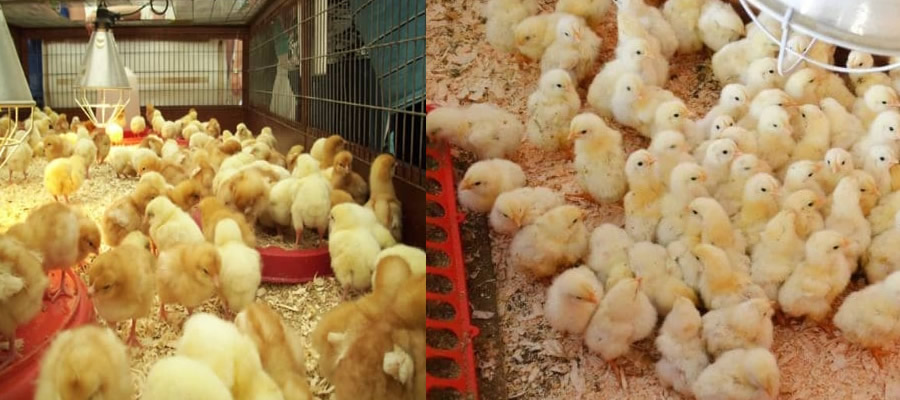
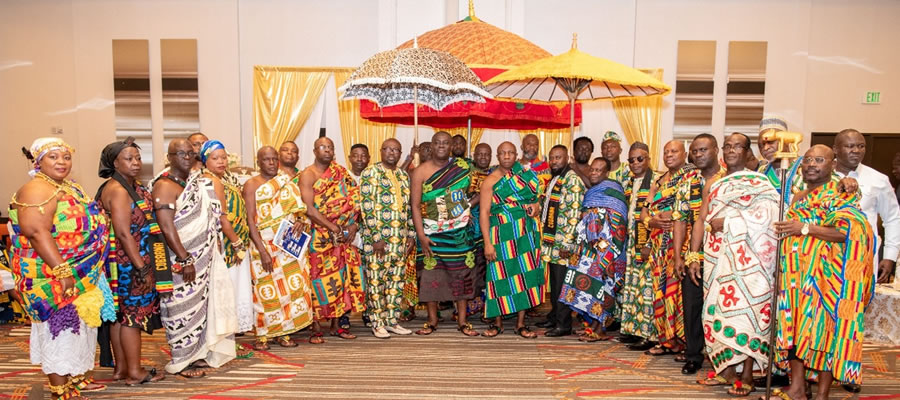

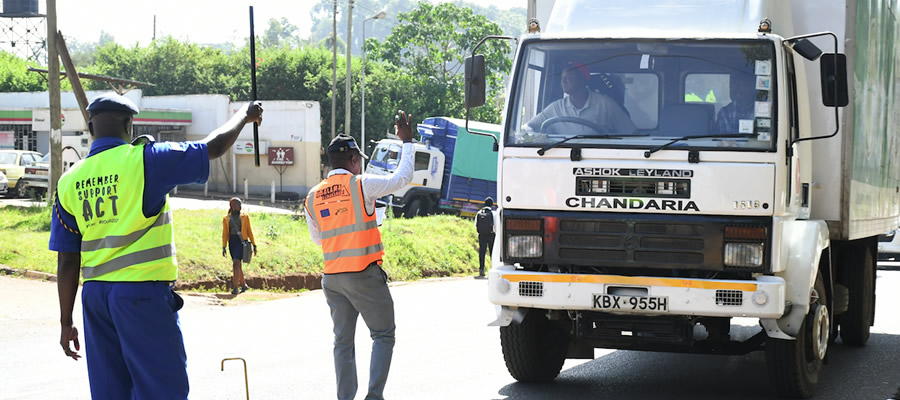
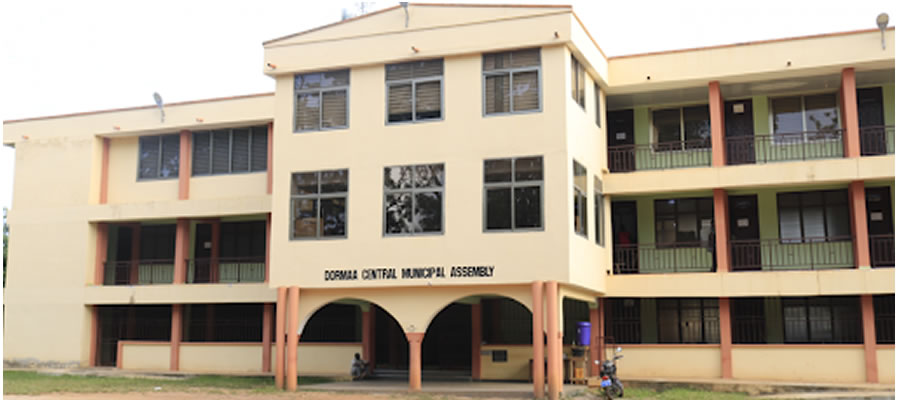


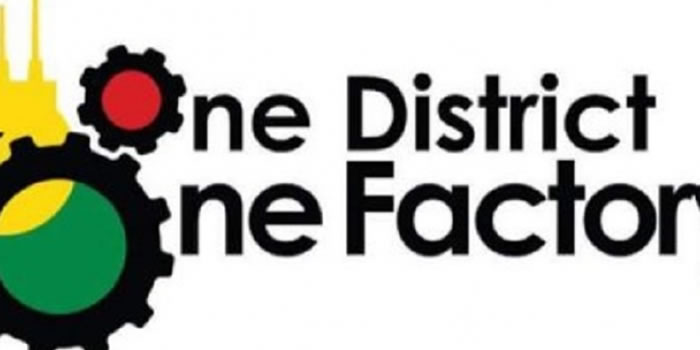


 facebook
facebook
 twitter
twitter
 Youtube
Youtube
 +233 593 831 280
+233 593 831 280 0800 430 430
0800 430 430 GPS: GE-231-4383
GPS: GE-231-4383 info@ghanadistricts.com
info@ghanadistricts.com Box GP1044, Accra, Ghana
Box GP1044, Accra, Ghana